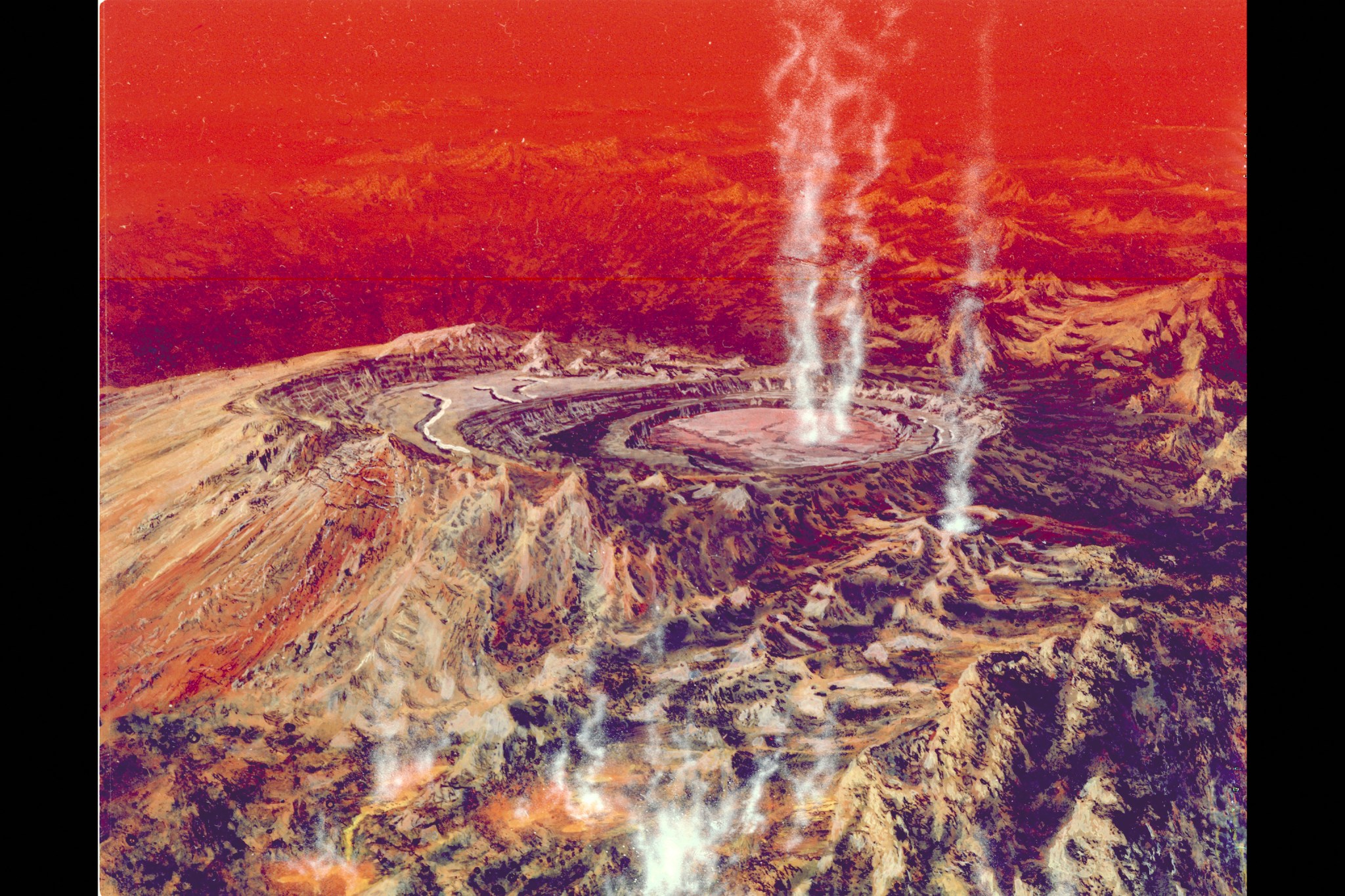Tall plumes of white vapor rise from the rocky Venusian surface in this April 19, 1977, artist’s concept. A little over a year later, NASA’s Pioneer Venus 1 would launch as the first of a two-spacecraft orbiter-probe combination designed to study the atmosphere of Venus.
The first American spacecraft to orbit Venus, Pioneer Venus 1 used radar to map the surface of Venus. The probe found Venus to be generally smoother than Earth, though with a mountain higher than Mt. Everest and a chasm deeper than the Grand Canyon.
Thanks to exploration by Pioneer Venus 1 and other spacecraft like Magellan, Galileo, Cassini, and even the Parker Solar Probe, we now have a much better view of what the surface of Venus looks like.
Image credit: NASA/Rick Guidice
